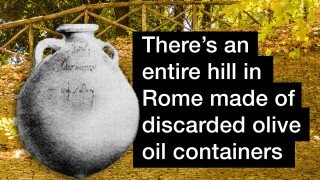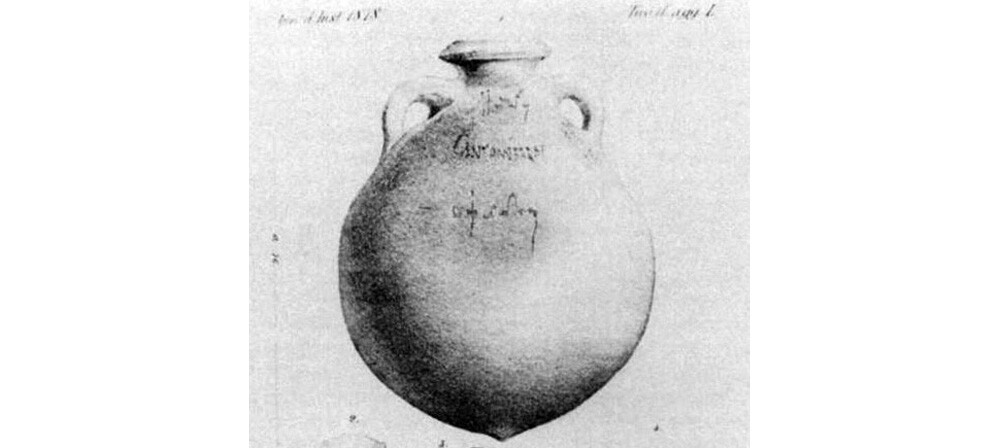4 Ways Our Ancestors Were Wasteful As Hell

Some people imagine a bygone age when humans lived in perfect harmony with the environment. “Back in the 1990s,” says some very confused person, “we didn’t have all these problems with garbage in the ocean and truckloads of trash getting dumped in landfills!” Slighter saner people set the date of their lost paradise further in the past, but when we really look at the past, we find people churning out all the trash they could.
They were trying to be as wasteful as possible, and if they didn’t produce as much garbage as we do, it’s only because they weren’t as good at production, period. And in many ways, they were even more disgusting than we are.
Royals Had to Keep Changing Courts Because They Stank Up the Last Ones
The world has a lot more castles than it does kings. This was also true a few centuries ago, and even factoring in all the lesser castle-dwelling lords doesn’t explain the surplus. No, there were so many castles because a royal would check into one with a full retinue of a thousand friends and servants. Then, they’d have to leave and switch to a different castle because they’d rendered the first one too filthy to live in.
Don't Miss
A royal would move into one of their many residences, and their courtiers would immediately start leaving their shit everywhere. We mean literal shit. Best-case scenario, people would use chamber pots and then dump the stuff out the window (Marie-Antoinette was once showered in defenestrated feces when walking through a Versailles courtyard), but often, people wouldn’t even bother doing that. They’d just find a bare spot on the floor in one of the palace’s many rooms and shit right there. This was routine, in even the most famous palaces like the Louvre.

Castles had systems for collecting and removing all this waste, but they weren’t fast enough to deal with a full house. Servants could only shift the stuff in the short-term to underground chambers, where it accumulated, along with discarded food. The smell grew more and more, and vermin swept in and infested the place. Finally, the monarch would decide that was enough and would take off for a new castle. The servants would now start the long process of clearing all the gunk out so the building was livable again. Ordinary houses in those days were dirty but manageable. Palaces were worse.
Dust Jackets Used to Be Disposable
When you buy a book in hardback, a paper cover protects the actual hard cover. As many book owners note, the glossy dust jacket doesn’t look terribly elegant, compared to (say) calligraphy directly on a book’s spine. It also makes reading slightly less convenient. You have to remove the jacket and set it aside when you read the book to avoid crushing and ripping the bottom of it, and then you have to slide the jacket back on when you’re done.

Some people even throw their dust jackets away and display the book on their shelf naked. This shocks other readers, unfamiliar with the practice, but this is how dust jackets were originally intended to be used.
Books first got dust jackets around 200 years ago. They were for a kind of luxury book because most books back then were sold unbound (they were just sheafs of papers, which you were supposed to bind yourself). Books that were prebound were special and needed protection. The dust jacket guarded the cover, which may have been made of delicate silk.
The dust jacket also sealed the book shut. You had to break the seal to open the book, and once the jacket was torn, you threw it away. The jacket was more obviously a disposable item back then, much like the box that a book might arrive in if you order one shipped to you today. The jacket featured ads for other books, so you really didn’t want to leave keep it lingering around in your house.
Eventually, booksellers realized people were more comfortable buying books that they could crack open before purchasing, and dust jackets evolved accordingly. But if someone from the 19th century saw you holding on to your book’s jacket, they’d laugh at you, just as you laugh at your grandparents for leaving protective plastic on their TV and their remote.
One Australian Town Paved Its Streets With Gold
Go prospecting, and you might stumble on some ore that looks a bit like gold but really is not. It’s pyrite, iron (II) disulfide, which is fairly valuable as random minerals go, but it’s nowhere close to as valuable as gold is.
In the 19th century, miners in Australia digging for gold found a mineral that looked something like gold but clearly wasn’t the genuine article. “Ah, it’s fool’s gold,” they told themselves. “We’re too smart to be taken in by this.” They didn’t bother making jewelry out of it or shaving it over really expensive chocolate truffles. They just tossed the stuff away. They also used some of it to make paving stones in the city of Kalgoorlie-Boulder.

Western Australian Museum
They were fools after all. The stuff wasn’t raw gold, but it wasn’t pyrite either. It was calaverite, a combination of gold and the metalloid tellurium. Years later, miners would realize you could break the stuff down, and pure gold would make up 42 percent of it. They’d go on to properly refine the calaverite in those deposits, coming up with 300 tons of gold. Of course, seeing the open mine today will make some people say, “Ugh, look at that devastation.”

But you know what’s more devastating than that? Trying for that same mining, but just throwing away the result.
There’s an Entire Hill in Rome Made of Discarded Olive Oil Containers
A whole lot of archaeology consists of digging up pots. That makes it seem like every bit of pottery from thousands of years ago is inherently valuable and belongs in a museum, but let’s not forget that this is just our ancestors’ trash. And they produced this trash in huge quantities.
The ancient Romans transported olive oil in containers called amphorae. Each one was almost 20 gallons big and looked something like this:

Many other commercial pots back then were reused over and over or were crushed to powder to make into concrete. Amphorae were not, for reasons archaeologists aren’t totally sure about. Instead, the people of Rome dumped a whole lot of these pots in one spot, forming a pile that grew bigger and bigger. They threw tens of millions of these olive barrels into a pile — maybe 25 million, maybe 60 million, we don’t know. The pile turned into a mountain 150 feet tall and a mile in circumference.

Be sure to visit Monte Testaccio next time you go to Rome. Though, you might figure it’s no big deal, since your own hometown also has a spot you call “pot hill.”
Follow Ryan Menezes on Twitter for more stuff no one should see.